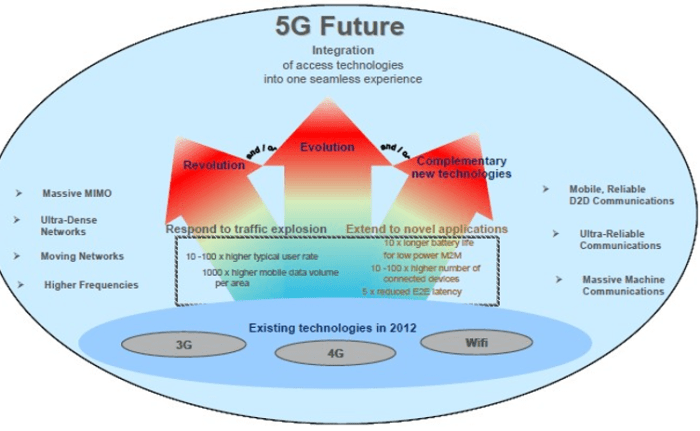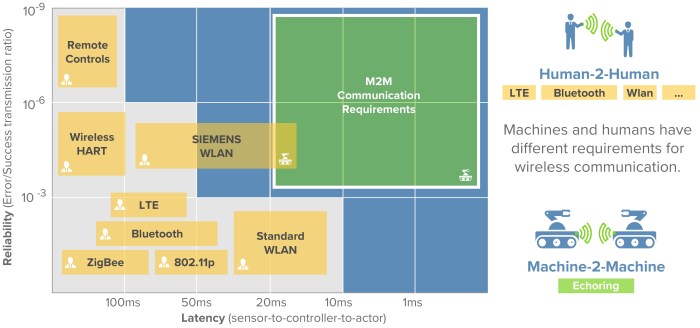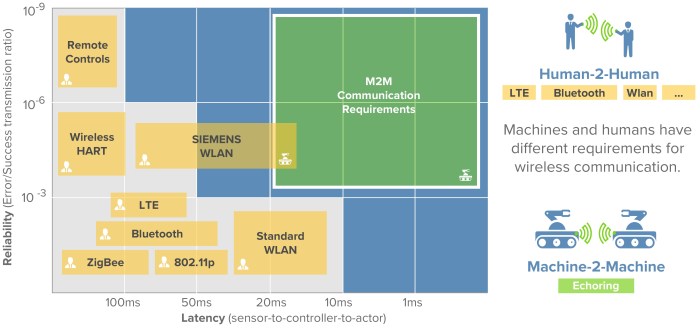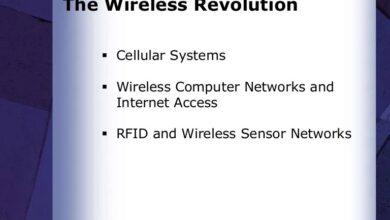Wireless LANs Gain Popularity Despite Risks
Wireless LANs gain popularity despite risks, a trend driven by the increasing need for mobility and flexibility in homes, businesses, and public spaces. From the early days of Wi-Fi to the latest advancements, wireless technology has fundamentally reshaped how we work and live. This exploration delves into the factors fueling this growth, examining the underlying technologies, advantages, risks, and future trends of wireless LANs.
The rapid evolution of wireless LAN standards, from 802.11a/b/g to the more recent 802.11ax, has dramatically improved speeds and capabilities. This has been a crucial factor in the widespread adoption of wireless networks. However, this increased accessibility brings new security concerns and potential vulnerabilities that need careful consideration.
Growing Popularity of Wireless LANs
Wireless LAN technology has revolutionized the way we connect to the digital world. From humble beginnings as a niche technology, it has rapidly evolved into an indispensable part of modern life, transforming homes, businesses, and public spaces. The increasing demand for seamless connectivity, coupled with advancements in technology, has propelled its popularity.Wireless LANs have become ubiquitous, offering a freedom of movement and flexibility that wired networks cannot match.
This has led to a significant shift in how we interact with technology and each other.
Historical Overview of Wireless LAN Technology
Wireless LANs have undergone significant evolution since their inception. Early standards, while functional, were limited in speed and range. The development of more sophisticated modulation techniques and higher frequency bands allowed for increased data rates and improved reliability. Key advancements include the introduction of 802.11 standards, each iteration building upon the strengths of its predecessors and addressing limitations.
This constant improvement has led to the robust and versatile wireless LANs we use today.
Factors Driving the Increasing Adoption of Wireless LANs
Several factors have contributed to the widespread adoption of wireless LANs. The convenience and flexibility of wireless connectivity are primary drivers, especially in homes and businesses where mobility is crucial. The ability to quickly and easily add new devices to a network without extensive cabling is a significant advantage. Also, the reduced cost of implementation compared to traditional wired networks, coupled with the increasing demand for high-speed internet access, has made wireless LANs a more attractive option.
Wireless LANs Changing Work and Life
Wireless LANs have fundamentally altered how we work and live. Remote work has become significantly more common, enabled by the ability to connect from anywhere with an internet connection. Smart homes, equipped with numerous connected devices, utilize wireless LANs to manage lighting, security systems, and appliances. This interconnectivity streamlines tasks and enhances efficiency, impacting various aspects of daily life.
Comparison of Wireless LAN Standards
Different wireless LAN standards offer varying levels of performance and capabilities. Understanding the differences between these standards is crucial for choosing the right technology for specific needs.
| Standard | Speed (Mbps) | Frequency Band | Capabilities |
|---|---|---|---|
| 802.11a | 54 | 5 GHz | High speed, good range, but susceptible to interference. |
| 802.11b | 11 | 2.4 GHz | Relatively low speed, but widespread compatibility. |
| 802.11g | 54 | 2.4 GHz | Improved speed over 802.11b, maintaining compatibility. |
| 802.11n | 100-600 | 2.4 GHz and 5 GHz | Significant increase in speed and range, multiple-input multiple-output (MIMO) technology. |
| 802.11ac | 6.9 Gbps | 5 GHz | Higher speeds, greater efficiency, and improved throughput. |
| 802.11ax | 10 Gbps | 2.4 GHz and 5 GHz | Further advancements in speed and efficiency, particularly in dense environments. |
Underlying Technologies and Infrastructure

Wireless LANs have become ubiquitous, seamlessly connecting us to the digital world. Understanding the intricate technologies powering these networks is crucial to appreciating their capabilities and limitations. From the radio waves that carry data to the sophisticated access points that manage connections, a complex infrastructure supports the wireless experience.The core of any wireless LAN lies in the skillful manipulation of radio frequencies.
Radio frequency (RF) transmission uses electromagnetic waves to send data wirelessly. These waves, modulated with digital signals, travel through the air until they reach the intended receiver.
Radio Frequency Transmission and Modulation
Radio waves, a form of electromagnetic radiation, are used to transmit data wirelessly. The process involves encoding digital data onto the radio waves. Different modulation techniques, like Frequency Shift Keying (FSK) and Phase Shift Keying (PSK), are employed to represent bits (0s and 1s) as variations in the radio wave’s characteristics. The choice of modulation technique significantly impacts the data rate and the range of the transmission.
Signal processing further refines the received signal, removing noise and interference, thus ensuring reliable communication. Signal processing techniques, such as equalization and error correction coding, are vital for maintaining data integrity over wireless channels.
Access Points, Routers, and Supporting Infrastructure
Access points (APs) are the central hubs of a wireless LAN. They act as intermediaries between wireless devices and the wired network. APs receive data from wireless clients, process it, and forward it to the wired network or other APs. Routers play a critical role in directing data traffic between different networks. They combine the functions of routing and managing connections between wired and wireless networks.
Wireless LANs are undeniably popular, despite the inherent security risks. Users crave the convenience and freedom they offer, often overlooking the potential vulnerabilities. Thankfully, organizations like the ITU are stepping up to the plate, joining the fight against spam, which indirectly bolsters the security of these networks. This initiative, detailed in un itu join fight against spam , highlights the collaborative efforts to address the digital landscape’s challenges.
Ultimately, while risks remain, the widespread adoption of wireless LANs continues, driven by user demand and proactive measures like these.
Other supporting infrastructure components, like wireless controllers, manage multiple access points, streamlining network administration.
Wireless LAN Network Architecture
A typical wireless LAN network consists of interconnected access points (APs) that collectively cover a specific area. These APs communicate with each other and with the wired network, enabling seamless roaming for wireless devices. The architecture of a wireless LAN is designed to accommodate various devices and user needs. The deployment of APs in different locations within the network ensures reliable coverage and optimal performance.
Wireless LAN Security Protocols
| Security Protocol | Effectiveness Against Threats |
|---|---|
| Wired Equivalent Privacy (WEP) | Highly vulnerable to cracking, especially older versions. Weak encryption and key management make it susceptible to various attacks. |
| Wi-Fi Protected Access (WPA) | Significantly improved security over WEP, introducing Temporal Key Integrity Protocol (TKIP) for encryption and key management. However, it is still susceptible to certain attacks. |
| Wi-Fi Protected Access 2 (WPA2) | Considered a robust security protocol using Advanced Encryption Standard (AES) encryption, providing strong protection against common threats. It is widely adopted for its security and stability. |
| Wi-Fi Protected Access 3 (WPA3) | The most advanced security protocol, offering enhanced security features like individualized data encryption and protection against brute-force attacks. |
Note that the effectiveness of these protocols depends heavily on the implementation and configuration, as well as the strength and complexity of the encryption keys. Regular updates and strong password policies are essential for maintaining the security of wireless networks.
Advantages and Benefits of Wireless LANs
Wireless LANs (WLANs) have revolutionized the way we work and live, offering a compelling alternative to traditional wired networks. Their ability to seamlessly integrate mobility and flexibility into various applications has made them indispensable in modern workplaces and personal lives. This shift is largely driven by the numerous advantages they offer, including significant improvements in productivity, efficiency, and cost-effectiveness.WLANs have evolved significantly from their early days, offering robust performance and security features that match or even surpass those of wired networks in many cases.
This advancement has made them an attractive solution for a wider range of applications, particularly in dynamic environments. Their adaptability is a key factor in their increasing popularity.
Mobility and Flexibility, Wireless lans gain popularity despite risks
WLANs’ primary advantage lies in their inherent mobility. Users can access network resources from virtually any location within the coverage area, eliminating the constraints of physical cabling. This freedom fosters greater flexibility, enabling employees to work from different locations, whether it’s a conference room, a client site, or a dedicated workspace at home. This freedom significantly enhances the overall efficiency and productivity of the organization.
This freedom from physical constraints allows for a more dynamic work environment, enabling employees to move freely and access resources where and when needed. For instance, a sales representative can access customer data and update reports from a client’s office without needing to return to the central office.
Cost-Effectiveness
Compared to wired LANs, WLANs often prove to be more cost-effective in the long run. Initial setup costs for WLANs can be lower due to the absence of extensive cabling. This is especially true in existing buildings or temporary setups where installing new wiring infrastructure is challenging and expensive. Furthermore, the flexibility of WLANs reduces the need for frequent reconfiguration of the network infrastructure when the layout of the workspace changes.
This translates into lower long-term maintenance and administrative costs.
Specific Application Advantages
WLANs excel in mobile offices, remote work environments, and other dynamic workspaces. The ability to easily connect mobile devices like laptops, tablets, and smartphones to the network allows employees to access files, collaborate on projects, and stay connected, even when working remotely. This adaptability allows businesses to operate more efficiently and effectively, regardless of the location of their employees.
For example, a construction company can use WLANs to connect project managers, engineers, and field workers to the company network, enabling real-time communication and data sharing.
Impact on Productivity and Efficiency
WLANs have a profound impact on productivity and efficiency across various industries. In healthcare, for instance, doctors can access patient records and communicate with other medical professionals seamlessly, improving patient care and reducing response times. In retail, employees can update inventory and process transactions quickly, minimizing delays and enhancing customer service. By enabling quick communication and data access, WLANs empower employees to perform tasks efficiently and contribute to higher productivity levels.
This ultimately translates into increased revenue and reduced operational costs.
Wireless LAN Deployment Options: Advantages and Disadvantages
| Deployment Option | Advantages | Disadvantages |
|---|---|---|
| Indoor | Ease of installation, lower initial costs, generally higher speeds | Potential interference from walls, furniture, and other electronic devices, limited range, security concerns if not properly configured |
| Outdoor | Wider coverage area, greater mobility for outdoor workers, potential for extended range | More susceptible to weather conditions (rain, snow, extreme temperatures), higher installation costs, more challenging to secure against external interference |
Risks and Challenges Associated with Wireless LANs

Wireless LANs, or Wi-Fi, have revolutionized how we connect to the internet, offering unparalleled convenience and flexibility. However, this convenience comes with inherent risks and challenges that must be understood and addressed to ensure a secure and reliable network. These risks range from simple security vulnerabilities to complex issues in large-scale deployments.While Wi-Fi offers significant advantages, the very nature of its wireless transmission makes it susceptible to various security threats and operational issues.
Understanding these challenges is crucial for effectively managing and securing wireless networks.
Security Vulnerabilities
Wireless LANs, by their nature, broadcast signals over the air, making them vulnerable to unauthorized access and interception. This inherent characteristic exposes the network to a range of security threats, demanding robust security measures to counter them.
- Unauthorized Access: Weak or default passwords, insufficient encryption protocols, and the lack of access controls can allow unauthorized individuals to connect to the network and potentially gain access to sensitive data. For instance, a poorly secured home Wi-Fi network can be easily accessed by a neighbor using a readily available hacking tool.
- Eavesdropping: Unencrypted data transmitted over a wireless network is susceptible to interception by malicious actors. This allows eavesdroppers to gain access to sensitive information, including passwords, credit card details, and confidential communications.
- Data Breaches: Compromised wireless networks can be exploited to gain access to confidential data. Once an attacker has gained unauthorized access, they can potentially steal or manipulate data, leading to significant financial and reputational damage for individuals and organizations. This can manifest in a variety of ways, from stolen financial information to the leakage of sensitive corporate data.
Interference and Environmental Factors
Wireless networks can be impacted by interference from other wireless devices and environmental factors. These factors can affect network performance and security.
- Interference from Other Devices: Multiple wireless devices operating in close proximity can cause interference, leading to signal degradation, dropped connections, and reduced network performance. This is particularly problematic in crowded environments like offices or homes with multiple Wi-Fi networks and Bluetooth devices operating simultaneously.
- Environmental Factors: Obstacles like walls, floors, and metal objects can weaken or block wireless signals, resulting in reduced coverage and performance. Additionally, external factors such as weather conditions can also impact signal strength and reliability. A thick concrete wall, for example, can significantly reduce the range of a Wi-Fi signal.
Managing Large-Scale Deployments
Managing and securing large-scale wireless LAN deployments presents unique challenges. The sheer scale and complexity of these networks demand sophisticated management and security solutions.
- Scalability: Expanding a wireless network to accommodate a growing number of users and devices requires careful planning and implementation. Solutions must be scalable to handle increasing demands without compromising security or performance. Overloading the network is a significant concern, particularly with rapid growth in connected devices.
- Security Management: Large-scale deployments necessitate comprehensive security policies and procedures. Implementing and maintaining these policies across a vast network can be challenging and require specialized personnel. Effective security measures must be in place to prevent unauthorized access and data breaches across the entire network.
Security Measures and Effectiveness
Various security measures are available to mitigate the risks associated with wireless LANs. However, the effectiveness of these measures varies depending on the specific implementation and the nature of the threat.
| Security Measure | Effectiveness | Description |
|---|---|---|
| WPA2/WPA3 Encryption | High | Strong encryption protocols that protect data transmitted over the network. |
| MAC Address Filtering | Medium | Allows only devices with specific MAC addresses to connect to the network. |
| Virtual Private Networks (VPNs) | High | Encrypts data transmitted over the network, enhancing security. |
| Network Access Control (NAC) | High | Verifies the identity and security posture of devices before allowing access to the network. |
Mitigating Security Risks
Wireless LANs, while offering convenience and flexibility, are vulnerable to security threats. Proper implementation and maintenance are crucial to safeguarding sensitive data and preventing unauthorized access. Implementing robust security measures is paramount for protecting the integrity and confidentiality of network communications.Implementing strong security practices reduces the likelihood of cyberattacks, data breaches, and disruptions to network operations. This proactive approach fosters a secure environment, ensuring the reliability and trust of the wireless network.
Common Security Best Practices
Robust security practices are essential for maintaining a secure wireless network. These practices include utilizing strong passwords, employing encryption protocols, and implementing access controls. These proactive measures effectively mitigate security risks and safeguard network resources.
- Employing strong passwords is fundamental to network security. Complex passwords, incorporating a mix of uppercase and lowercase letters, numbers, and symbols, are far more resistant to brute-force attacks compared to simple, easily guessed passwords. Regular password changes further enhance security, preventing unauthorized access by maintaining an evolving level of protection.
- Implementing strong encryption protocols, such as WPA3, is crucial for securing wireless communication. Encryption scrambles data transmitted over the network, rendering it unreadable to unauthorized users. WPA3 offers enhanced security compared to older protocols, providing a stronger defense against various attack vectors. Using the most current encryption standards is essential for safeguarding data confidentiality and integrity.
- Implementing access controls is critical to managing network access. Restricting network access to authorized users through authentication mechanisms and user roles helps prevent unauthorized individuals from accessing sensitive data or resources. Implementing granular access controls limits the potential damage from unauthorized users.
Importance of Strong Passwords, Encryption Protocols, and Access Controls
Strong passwords, robust encryption protocols, and effective access controls are vital components of a secure wireless LAN. These elements collectively form a layered security approach that significantly reduces the risk of unauthorized access and data breaches. A well-configured network, leveraging these elements, strengthens the overall security posture.
Wireless LANs are definitely gaining traction, despite legitimate concerns about security. Parents are increasingly turning to technology to help supervise their children, and solutions like using tech to help supervise children are becoming more common. This desire for constant connection, however, highlights the inherent risk in widespread wireless LAN adoption. Ultimately, the popularity of wireless LANs, despite the risks, shows a clear trend in our increasingly connected world.
- Strong passwords are the first line of defense against unauthorized access. Using unique, complex passwords for each account ensures that compromise of one account does not lead to the compromise of others.
- Encryption protocols, such as WPA3, protect transmitted data from eavesdropping. They ensure that data remains confidential and inaccessible to unauthorized parties.
- Access controls limit network access to authorized users, preventing unauthorized individuals from accessing sensitive data or resources.
Role of Intrusion Detection Systems and Firewalls
Intrusion detection systems (IDS) and firewalls play a critical role in securing wireless networks. IDS continuously monitor network traffic for malicious activity, while firewalls control network traffic based on predefined rules. This combination of tools forms a critical layer of defense against security threats.
- Intrusion detection systems (IDS) monitor network traffic in real-time for suspicious activity, such as unauthorized access attempts or malicious code. IDS provide an early warning system, enabling prompt response to potential threats.
- Firewalls act as gatekeepers, controlling network traffic based on predefined rules. They filter incoming and outgoing traffic, preventing unauthorized access and protecting the network from external threats.
Steps for Configuring Secure Wireless LAN Access Points
Proper configuration of wireless LAN access points is essential for a secure network. Following these steps ensures that the access point is configured with robust security measures.
- Enable WPA3 encryption on the access point. WPA3 offers enhanced security compared to older protocols, providing a stronger defense against various attack vectors.
- Create a strong password for the network. A strong password includes a mix of uppercase and lowercase letters, numbers, and symbols.
- Enable MAC address filtering to restrict access to only authorized devices.
- Disable SSID broadcasting to hide the network name from unauthorized users.
- Configure a firewall to control network traffic and protect against unauthorized access.
- Regularly update the firmware of the access point to patch security vulnerabilities.
Future Trends and Developments
The wireless LAN landscape is constantly evolving, driven by the ever-increasing demand for faster, more reliable, and more secure connectivity. Emerging technologies are poised to revolutionize how we interact with and utilize wireless networks, promising significant improvements across various sectors. This evolution addresses the existing challenges by offering solutions for improved performance, greater capacity, and enhanced security.
Emerging Technologies Shaping the Future
The next generation of wireless LANs is being shaped by several key technologies. These innovations are crucial for maintaining and expanding the widespread adoption of wireless networks. The 6 GHz band, for instance, offers a significant increase in available spectrum, enabling higher bandwidth and lower latency. Wi-Fi 7, building upon the foundation of Wi-Fi 6, promises even faster speeds and more efficient data transmission.
Other advancements, such as enhanced security protocols and more intelligent network management, are also vital for future growth.
The 6 GHz Band: Expanding Bandwidth Potential
The availability of the 6 GHz band represents a significant opportunity for wireless LANs. This new spectrum offers substantially more bandwidth than previously utilized frequencies, allowing for increased data rates and a reduced number of network congestion issues. For instance, a significant number of devices are already utilizing the 5 GHz band, and with the introduction of 6 GHz, it is expected that more bandwidth will be made available, resulting in an increased number of devices that can connect to a wireless network at the same time.
This increase in bandwidth is particularly valuable in environments with many devices, like homes with multiple connected devices, and public spaces with a high density of users.
Wi-Fi 7: Enhanced Performance and Capacity
Wi-Fi 7 is the next evolution of Wi-Fi technology, promising to further enhance performance and capacity. Key features include improvements in speed, reliability, and efficiency. It addresses the limitations of previous generations by incorporating technologies such as Multi-Link Operation (MLO), which allows simultaneous connections across multiple bands (2.4 GHz, 5 GHz, and 6 GHz). This significantly enhances the network’s overall performance and capacity, enabling more devices to connect and communicate effectively.
Impact on Various Sectors
The adoption of these technologies will have a profound impact on various sectors. In the enterprise sector, increased bandwidth and reduced latency will be crucial for supporting high-performance applications like video conferencing and virtual reality. In the consumer sector, faster speeds will translate to smoother streaming and quicker downloads, enhancing the user experience. The potential for seamless integration of wireless technologies in various devices will accelerate the development of smart homes and IoT networks.
Predicted Growth Rates and Market Shares
| Technology | Predicted Growth Rate (2024-2029) | Predicted Market Share (2029) ||—|—|—|| Wi-Fi 6 | 20-25% | 60-65% || Wi-Fi 6E (6 GHz) | 30-35% | 25-30% || Wi-Fi 7 | 15-20% | 10-15% |
Note: These figures are estimates and are subject to change based on market adoption and technological advancements. Market share predictions are based on current trends and anticipated demand.
Case Studies and Examples: Wireless Lans Gain Popularity Despite Risks
Wireless LAN deployments have proven invaluable across diverse industries, demonstrating the transformative potential of this technology. From streamlining operations in retail settings to enhancing patient care in healthcare facilities, wireless LANs have facilitated significant improvements in efficiency and productivity. This section explores real-world examples, highlighting the specific challenges encountered and the innovative solutions implemented to achieve success.
Wireless LANs are becoming increasingly popular, despite the inherent security risks. While the convenience of seamless connectivity is hard to ignore, it’s interesting to see how companies like Kodak and IBM are pushing the boundaries of image technology with their new digital image sensors, Kodak IBM collaborate on new digital image sensors. This innovation, combined with ongoing advancements in encryption protocols, ultimately strengthens the overall security landscape, allowing for the continued growth of wireless LAN technologies.
Hospitality Industry Deployments
Wireless LANs have revolutionized the hospitality industry, enhancing guest experiences and streamlining operational tasks. Hotels and resorts now offer seamless connectivity for guests, enabling them to access information, entertainment, and communication tools conveniently. This improved connectivity fosters a positive perception of the establishment and encourages repeat business.
- Example: A large hotel chain implemented a new Wi-Fi system that provided consistent, high-speed internet access throughout the entire property. This allowed guests to stream movies, work remotely, and stay connected with ease, boosting customer satisfaction and generating positive online reviews. The system was also integrated with the hotel’s reservation and billing systems, improving operational efficiency.
Retail Industry Successes
Retail businesses are leveraging wireless LANs to enhance customer experience and optimize internal processes. By providing real-time data and insights, wireless networks enable retailers to better understand customer preferences and personalize shopping experiences.
- Example: A major retail chain deployed a high-bandwidth Wi-Fi system in its stores. This enabled real-time tracking of inventory levels, improved customer engagement through interactive displays, and streamlined staff communication via instant messaging and internal applications. Reduced downtime and improved employee productivity were tangible benefits.
Healthcare Sector Applications
Wireless LANs are transforming healthcare facilities by improving patient care and communication efficiency. Clinics and hospitals are leveraging wireless technology for remote patient monitoring, telehealth consultations, and streamlined staff communication.
- Example: A hospital implemented a secure wireless network for medical devices and staff workstations. This allowed for real-time data transmission from patient monitoring equipment, facilitating quicker diagnoses and enabling remote consultation with specialists. Enhanced security protocols protected sensitive patient data and ensured compliance with HIPAA regulations.
Notable Success Stories
A collection of successful wireless LAN deployments across diverse sectors illustrates the widespread applicability and benefits of this technology.
- Retail Chain A: Successfully integrated Wi-Fi into its stores, leading to improved inventory management, enhanced customer engagement, and a boost in sales.
- Hospital B: Implemented a robust wireless network, enabling remote patient monitoring, streamlined communication, and reduced medical errors.
- Hotel Chain C: Deployed a high-speed Wi-Fi system, resulting in increased customer satisfaction, positive online reviews, and enhanced operational efficiency.
Comparison with Other Technologies
Wireless LANs have become ubiquitous, but they aren’t the only game in town when it comes to wireless networking. Understanding their strengths and weaknesses relative to other technologies helps determine the best solution for specific needs. This comparison explores the capabilities and limitations of wireless LANs alongside other prevalent wireless standards, providing context for their applications.Wireless LANs, often shortened to Wi-Fi, dominate the consumer market for personal and home networking.
However, other technologies cater to specific needs and contexts, such as industrial automation or low-power sensor networks. Understanding these alternatives illuminates the ideal use case for each.
Wireless LANs vs. Bluetooth
Bluetooth is a short-range wireless technology commonly used for pairing peripherals like headphones, keyboards, and mice. It prioritizes low power consumption and ease of pairing over high data rates. Wi-Fi, on the other hand, excels at high-bandwidth applications like streaming video and large file transfers. Bluetooth’s limited range and lower data speeds make it unsuitable for tasks requiring substantial throughput.
Conversely, Wi-Fi’s longer range and higher speeds are better suited for wider area networking. The critical difference lies in the intended application: Bluetooth for close-range devices, Wi-Fi for broader, more demanding networks.
Wireless LANs vs. Zigbee
Zigbee is a low-power, low-data-rate wireless technology designed for applications requiring long battery life and extensive sensor networks. Its focus is on reliability and mesh networking capabilities. Wi-Fi, in contrast, offers superior speed and bandwidth, making it ideal for applications requiring substantial data transmission. Zigbee’s strength is in situations where continuous monitoring and low-power operation are crucial, such as home automation or industrial sensors.
Wi-Fi, with its speed, is more appropriate for streaming video or playing online games.
Wireless LANs vs. Wired LANs
A direct comparison highlights the trade-offs between wired and wireless LANs. Wired LANs offer consistent high speeds and are generally more secure due to the physical isolation of the connection. However, they lack the mobility and flexibility of wireless LANs. This is particularly important in dynamic environments where users require freedom of movement. The choice between wired and wireless depends on the specific needs of the application.
| Feature | Wireless LAN (Wi-Fi) | Wired LAN |
|---|---|---|
| Speed | Variable, typically 100 Mbps to Gigabit speeds | High, consistent speeds, ranging from 100 Mbps to 10 Gbps+ |
| Cost | Relatively low initial cost for access points and adapters | Initial cost can be higher due to cabling, but long-term cost is lower due to the absence of recurring expenses like replacing access points. |
| Security | Vulnerable to attacks if not properly configured and secured; Requires specific security measures. | Generally more secure due to physical separation, but vulnerable to attacks on the network infrastructure or endpoints. |
| Mobility | High mobility and flexibility | Low mobility, restricted by the cabling |
| Installation | Relatively easy to install and configure | Can be more complex to install due to cabling and infrastructure setup |
Final Wrap-Up
In conclusion, while wireless LANs offer undeniable advantages in terms of mobility and cost-effectiveness, it’s crucial to acknowledge and address the inherent security risks. Careful planning, robust security measures, and staying informed about emerging technologies are key to leveraging the benefits of wireless LANs while mitigating potential vulnerabilities. The future of wireless networking is bright, and careful management and ongoing innovation will be critical to maintaining security and maximizing efficiency.







